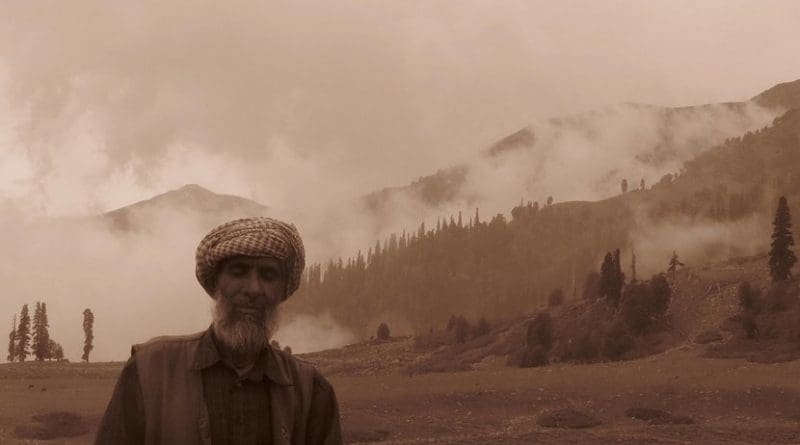Beauty Apart,The Strategic Significances Of Kashmir During British Era – OpEd
Kashmir is best known as ‘a garden of eternal spring’ and a ‘tourist’ paradise’. Nature itself when creating this valley and its enclosing wall of mountains, seems to have assured to this territory not only a distinct geographical character, but also a historical existence of marked individuality.
It is bounded northwest by Afghanistan northeast by Sinkiang Province of China and east by Tibet. Kashmir is divided physically into two parts, very unequal in area, climate and population by the great Himalayan mountain system, which runs from the North boundary of Chamba State to where Nanga Parbat Mountain towers 26656 ft above the Indus.
The fertile valley of Kashmir and the Jammu-Kashmir plain, which is 120 miles long and 76 miles wide, the well–watered valley and forested hills surrounding them, are drained by the Jhelum, the Chenab, and Ravi, the waterly three of the five rivers of the Punjab.
The smaller but more densely populated part of Jammu Province divides itself naturally into three geographical, ethnic, economic and linguistic regions: Kashmir, the western non – Kashmiri districts and East Jammu Province, the first two drained by the Jhelum, the third by the Chenab and the Ravi. There are three similar trans – Himalayan frontier regions: the Gilgit area, Baltistan and Kargil and Buddhist Ladakh. These six main parts of the state intermingle and overlap in some respects, but the broadly distinct and homogeneous.
There are no particular geographical distinctions between the West and East parts of Jammu Province to Ladakh. Only the valley of Kashmir and the Gilgit regions are clearly defined by high mountain barriers.
Health benefits of Kashmir
As a health resort, Kashmir, excluding Srinagar, has no rival anywhere in the neighbourhood of India. In consequence of the varied range of temperature and the facility of moving about, the visitor is enabled with ease to select places at elevations most congenial to him.
The railway to Rawalpindi and a driving road thence to Srinagar make the valley easy to access. When the temperature in Srinagar rises at the beginning of June, visitors normally go to Gulmarg, a fashionable hill station.
Writing about the unique climate of land, Walter Lawrence says, ‘it is impossible to speak of Kashmir as possessing any one climate. Every hundred feet of elevation brings some new phase of climate and of vegetation, and in a short ride of thirty miles one can pass from over powering heat to a climate delightfully cool or can escape from wearisome wet weather to a dry and sunny atmosphere.’
Famed for its beauty, the valley of Kashmir presents a breath- taking view — a vast carpet in a thousand shades of greens and blues, tans and lavendar, with shimmering brooks and streams, a picture of incredible beauty, with its distant features half revealed half concealed by magic mist.
Throughout its known history, the name Kashmira, in its original Sanskrit form, has been used as the sole designation of the country. The Sanskrit ‘Kashmira’ still lives as ‘Kashmir’. In Persian spelling it is Kashmir.
Creation of present Jammu and Kashmir
The Present State of Jammu and Kashmir was created by the military and Political powers of the British. Events which occurred at the close of the eighteenth century in Europe, had largely shaped the policy of the British in India.
The Indian ruler Tipu Sultan had earlier entered into an alliance with the French with the sole aim of driving out the British from the Indian soil. When the French failed in their attempt, the Russian came forward and their shadow started lengthening over the north-western frontiers of India.
Conflicts of interests gave birth to the Anglo –Russian rivalry in India and the countries surrounding it. At that time Russia was not ignorant of India and the most famous Russian traveller A. D. Saltikova visited India in 1841, wrote a book about the country. He traveled the whole of India and prepared innumerable sketches and pictures.
Although England succeeded in putting a stop to the Russian ‘leap forward policy ‘it now began to take interest in Persia and Afghanistan, with the result that by 1837, Persia became practically subservient to Russia. Now they turned their attention towards Afghanistan, strategically situated north of India.
The British Government became alarmed and seriously chalked out their policy for creating buffer states surrounding their precious empire, which was ringed with dependent and buffer states like Siam, Bhutan, Sikkim, Nepal, Tibet and Afghanistan.
Strategic importance
In coming years the situation worsened with Russia’s moving towards the Southern and eastern regions, in 1864, when she occupied Chinkent. It was followed by the occupation of Tashkent in 1865, Kohj in 1866 and Yuni Kurgan in 1867. The Russians subjugated Samarkand in 1868.
As a result, the British took effective steps in the consolidation of the scientific frontier of their Indian Empire. They extended railway lines up to Quetta and the Khyber passes. A policy of reconciliation with the Amir of Afghanistan was enunciated so as to secure a safe north–western frontier.
Having done this, they desired to seal two other doors from outside influence and these were Gilgit and Leh. The British had to pursue a policy favourable to their Imperial interests. Hence they had to look for some other barrier against Russia and it could be no other territory than Kashmir, which lies at the crossroads of India Russia and China and could be an important jumping– off place for military operations.

